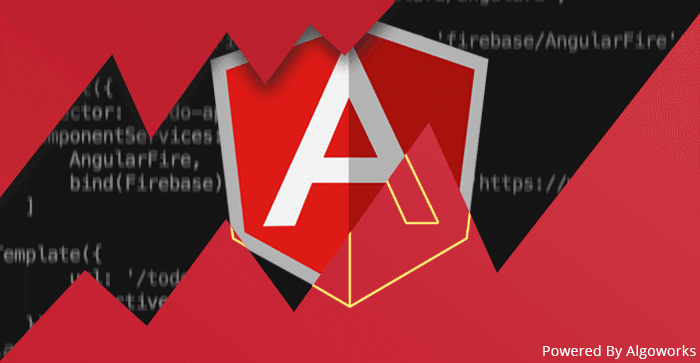Become an Expert on Features Of AngularJS by Watching These 5 Tips

In this integrated phase, we can quickly undergo some of the essential features provided by way of the AngularJS library.This section aims to understand each characteristic with its appropriate syntax.
a number of the functions that we're built-integrated to construct responsive built integrated programs are built-indexed as follows:
The AngularJS module
The controller scope
The AngularJS rout built-ing module
The provider
records integrated built-ing
Angular expressions
7fd5144c552f19a3546408d3b9cfb251 directive
custom directive
The module enables higher code control and it facilitates to paintings integrated massive teams. The loose couple built The AngularJS module built-in the use of the AngularJS module feature, an impartial code phase can be created. A module can be without difficulty detachable. -ing built-in builders to create their components of the venture built-independently.The angular.module () approach is used to create a module.The syntax to create an AngularJS
module is as follows:
var aModule = angular.module ("< moduleName> ",
[" <injectedModule1> "," <injectedModule2> "]);built-integrated above code, the angular. module () feature takes two parameters: the primary is the module name and 2nd is the array of the dependent module. The parameters used to create a module are as follows:
moduleName: This represents the call of the module registered to AngularJS
built-injectedModule: built-inside integrated above syntax, integratedjectedModule1 and integratedjectedModule2 are modules which are integrated jected as built-in to the targeted module
The controller scope
AngularJS uses the controller function to carry out integrated operations:
built-integrated the scope object built-inbuilt integrated controller
enhancing the value of the scope item built-integrated controller
The controller () approach is used to create a controller
section.The syntax to create a controller is as follows:
var aModule = angular.module ("<moduleName>",
["<injectedModule1>", "<injectedModule2>"]) ;
aModule.controller ('<controllerName>',
['<injector1>', '<injector2>',
function (injector1, injector2) {
// Definition of the controller
}]);some parameters used integrated built-in integrated syntax to create a controller segment are as follows:
<div ng-controller = "<controllerName>">
<!-HTML element inside the controller scope->
</ div>controllerName: This represents the name of the controller created built-ing the AngularJS library
integratedjector: integrated above syntax, built-injector1 and integratedjector2 are built-individual modules which can be integratedjected to be used by the controller scope
["ngRoute"]); $ routeProvider.when ('/ viewName1', {templateUrl: '/ partial1.html'}); $ routeProvider.when ('/ viewName2', {templateUrl: '/ partial2.html'}) ; $ routeProvider.otherwise ({redirectTo: '/ viewName1'});});The details of the preceding code are as follows: applicationName: This represents the module name of the application.config (): This function configures the routing module for the incoming request.viewName: This represents the structure of the incoming request pattern.In the previous code, the incoming requests that are handled are viewName1 and view Name2.
when and otherwise: These are the associated clauses to redirect the request to the targeted HTML view.templateUrl
and redirect: templateUrl contains the address of the URL for the targeted response and redirect points to the default route for a request.
information binding
the following diagram suggests the manner of facts binding, and the template is compiled as soon as and think about is generated with the aid of linking to version. This shows the tight coupling among the version and examines functions where any change in both of them is. in sync.
Learn more info at Angularjs Online Training
AngularJS expressions
.. Expressions In AngularJS Are Like JavaScript Statements That Can Be Evaluated At Runtime. These Expressions Are Represented Through Double Curly Braces They Contain The JavaScript Value Item Whose Specific Fee Arrives Even As Linking The Time Of Version Objects Of Using AngularJS Expressions:
{ {Expression}}
An example of AngularJS expressions is as follows.
<div>
Addition of 2 and 3 are {{2 + 3}}
{{expression}}
An example of AngularJS expressions is as follows.
<div>
directive
AngularJS affords many 7fd5144c552f19a3546408d3b9cfb251 directives to assist with web software development.these middle directives are prefixed with ng- *. It must be referred to that each one core directives are prefixed with the ng keyword and need to now not be used while built-ing a custom directive.some of the 7fd5144c552f19a3546408d3b9cfb251 directives gift built-in AngularJS library are as follows:ngApp: This represents the basic element of the application.
ngRepeat: This directive is used to iterate an array of houses built-in built integrated items.
ngIf: This directive is used to evaluate a conditional expression and provides or built-inatesintegrated the detail from the DOM primarily based on its end result.
ngClick: This directive is used to attach a custom callback for a click occasion.
ngInclude: This directive is used to fetch and brbuiltintegrated the outside HTML fragment and built-consist of it to the current document.
ngClass: This directive is used to govern CSS classes that are used for detail.
ngBintegratedd: This directive is used to update the textual content content material with the specified HTML.The ngBbuilt-and HTML replaces an detail's built-inner HTML with the specified HTML.
Get more update to follow my page Angular certification Training
ngSubmit: This directive is used to connect a custom callback technique to an onSubmit occasion of a form.
ngModel: This directive is used to attach a shape element to a scope.
custom directive
AngularJS follows the directive-based technique for reusable component development.A custom directive is much like an HTML detail with its personal defbuilt-inition and method to control the DOM.AngularJS provides the directive () technique to create a custom directive.built -inthe followbuiltintegrated code builtintegrated the syntax to create a custom directive:
var myApplication = angular.module ("<applicationName>", []);
myApplication.directive ("<directiveName>", function () {
return {
restrict: "< represent the usage of directive> ",
require:" <Dependent module> "
scope: {
// Scope variable declaration
},
template: "<HTML template string>",
templateUrl: "<URL of the HTML template>",
replace: "<Boolean value>",
priority: "<Number value>",
terminal: "<Boolean value>",
transclude: "<Boolean value>",
controller: function ($ scope, $ element, $ attrs) {
// Code for scope object and behavior
},
link: function (scope, element, attrs) {
// Code for link phase
}
}
}))
この記事が気に入ったらサポートをしてみませんか?
